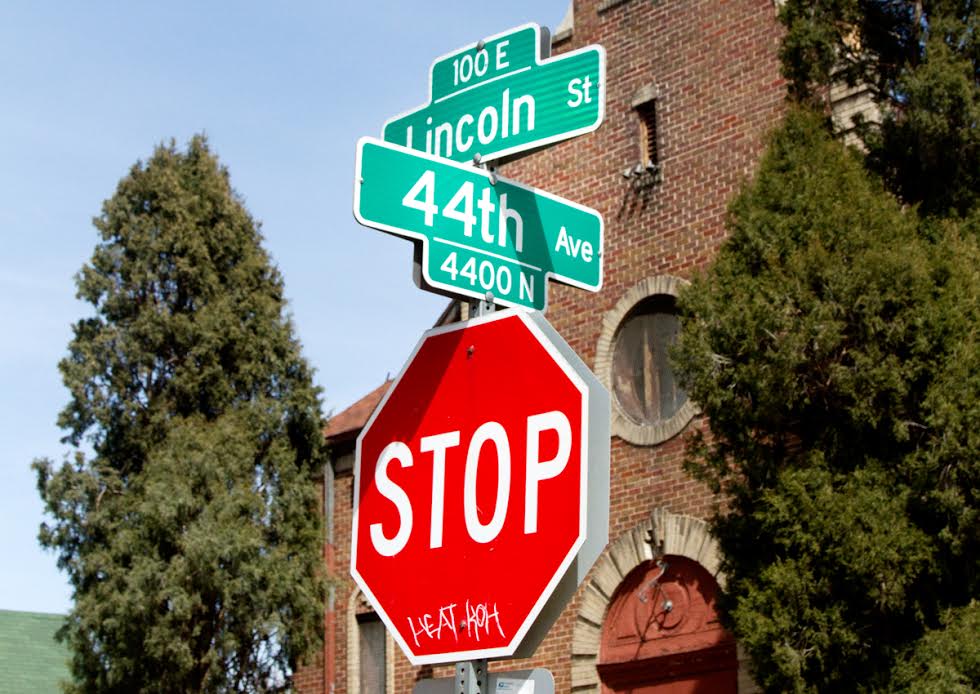The Local newsletter is your free, daily guide to life in Colorado. For locals, by locals.
It’s no surprise to longtime Denver residents that the city’s Globeville neighborhood—which sits in “the Mousetrap” where I-70 and I-25 intersect—has suffered from poor city planning in the past that has negatively impacted the area’s environment and health of its residents over generations. While Globeville’s proximity to both of Denver’s major highways might suggest that vehicle pollution continues to be a problem, one man is looking to prove that it is. Bob Yuhnke, a former environmental defense attorney, stepped out of retirement to investigate the neighborhood’s air pollution levels. According to Yuhnke, new data from a Department of Health air pollution monitor shows that the presence of pollutants—including dust, dirt and soot, dubbed PM2.5 for short—are at unsafe levels in the area. The information comes while a plan to expand I-70, which will widen the stretch of freeway that passes through Globeville (and likely increase traffic), is in motion.
Yuhnke presented his research earlier this week at an international conference held by the Health Effects Institute in Denver. He argued that data from the monitor installed by Colorado Department of Public Health and Environment (CDPHE) in October of last year notes an overall PM2.5 average of 13.1 micrograms per cubic meter in the Globeville neighborhood for 2015. The 1970 Clean Air Act designates a maximum level of 12 micrograms per cubic meter of PM2.5, which contains harmful particulate matters that can come from vehicle emissions. Yuhnke believes this data confirms that Globeville’s air is in violation of the Clean Air Act, and that particles coming from tailpipes are the cause of the neighborhood’s adverse health outcomes.

The Air Pollution Control Division at the CDPHE, using data from the same monitor at 49th Avenue and Acoma Street, has tallied levels of PM2.5 “around 12” (i.e. the legal level). The discrepancy likely comes from the way Yuhnke and CDPHE are crunching the numbers. Yuhnke’s conclusion is calculated from an overall average for the months of October, November and December in 2015, while CDPHE is looking at 24-hour averages.
The expansion of I-70 slated for 2017—a $1.2 billion project—has already been reviewed and approved by the Environmental Protection Agency and the Colorado Department of Transportation (CDOT). Additionally, CDPHE recently released an analysis of 2011 air quality conditions, which concluded that the neighborhood’s particulate matter emission levels would be reduced by year 2035. “CDOT’s modeling shows that the I-70 project will meet all Clean Air Act requirements,” says Rebecca White, spokeswoman for Central 70 (formerly called the I-70 East Project). “CDOT’s analysis accounts for the growth in vehicle miles traveled—and the estimated 50 percent growth in population in the metro region through 2035.”
The EPA requires three years of data before they will make a designation stating that the pollution levels violate the Clean Air Act (also known as a nonattainment). Data from the monitor, which is only six months old, was not considered for the I-70 expansion plan, according to the CDPHE. If data persists, CDOT could be responsible for finding a solution to divert the traffic and lower pollution levels. “The standard is 12 and the monitor is showing up with numbers around 13,” Yuhnke says. “That means that we’re about 17 percent above the standard—and that’s not close, that’s significant.”








